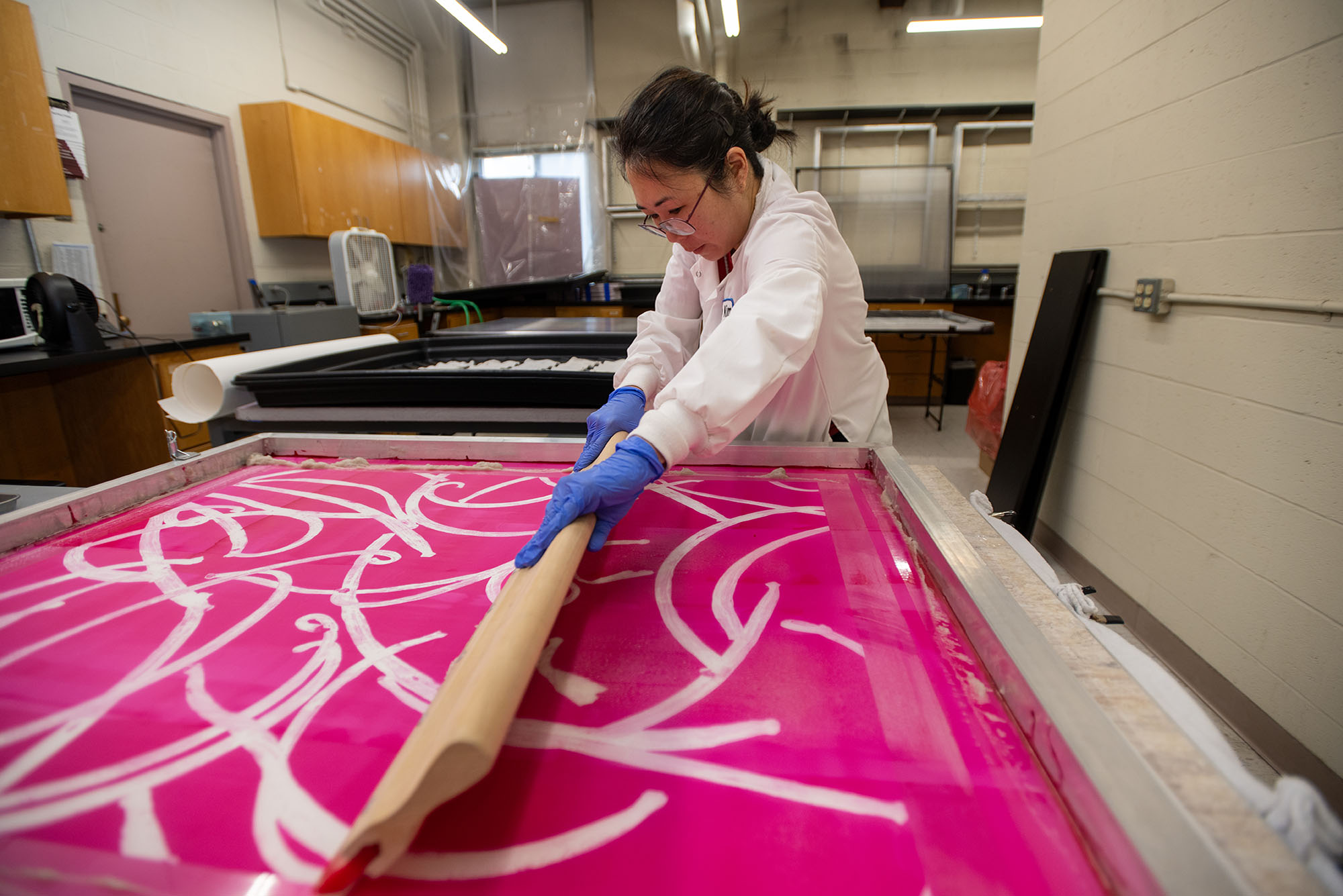Video: Screen Printing with Melanin
CFA’s Lucy Kim has swapped the studio for the science lab to create art with the same pigment that gives our eyes, hair, and skin their color
Screen Printing with Melanin
Screen Printing with Melanin
Lucy Kim likes to experiment. The award-winning visual artist and BU College of Fine Arts associate professor of art, painting, has made a career of manipulating materials. She has worked with urethane resin, fiberglass, epoxy, oil and acrylic paints, silicone, aluminum foil, burlap, and wood (and that’s just a partial list). She’s built 3D textures into paintings and mashed 3D busts until they’re almost two-dimensional. Now, she’s screen-printing with a material that shapes our lives in myriad ways: melanin.
Kim is creating art with the natural pigment that gives our eyes, hair, and skin their color, using it to make captivating monochromatic screen prints. But printing with melanin isn’t like mixing up a bunch of dyes. In organisms, including humans, it takes a series of incredibly complex chemical processes to produce the pigment. To make these prints, Kim has had to swap her artist’s studio for a scientist’s lab.
The integration of her artistic process into a laboratory has been a natural fit for Kim. “Experimentation and surprise—and in some ways, disappointment—are my lifeline,” she says. “To me, the point of being an artist is to see something new. You’re always trying to find a new path, confronting a new thing.”
In the video above, Kim shows how she screen-prints using genetically modified E. coli cells that produce melanin.



Comments & Discussion
Boston University moderates comments to facilitate an informed, substantive, civil conversation. Abusive, profane, self-promotional, misleading, incoherent or off-topic comments will be rejected. Moderators are staffed during regular business hours (EST) and can only accept comments written in English. Statistics or facts must include a citation or a link to the citation.